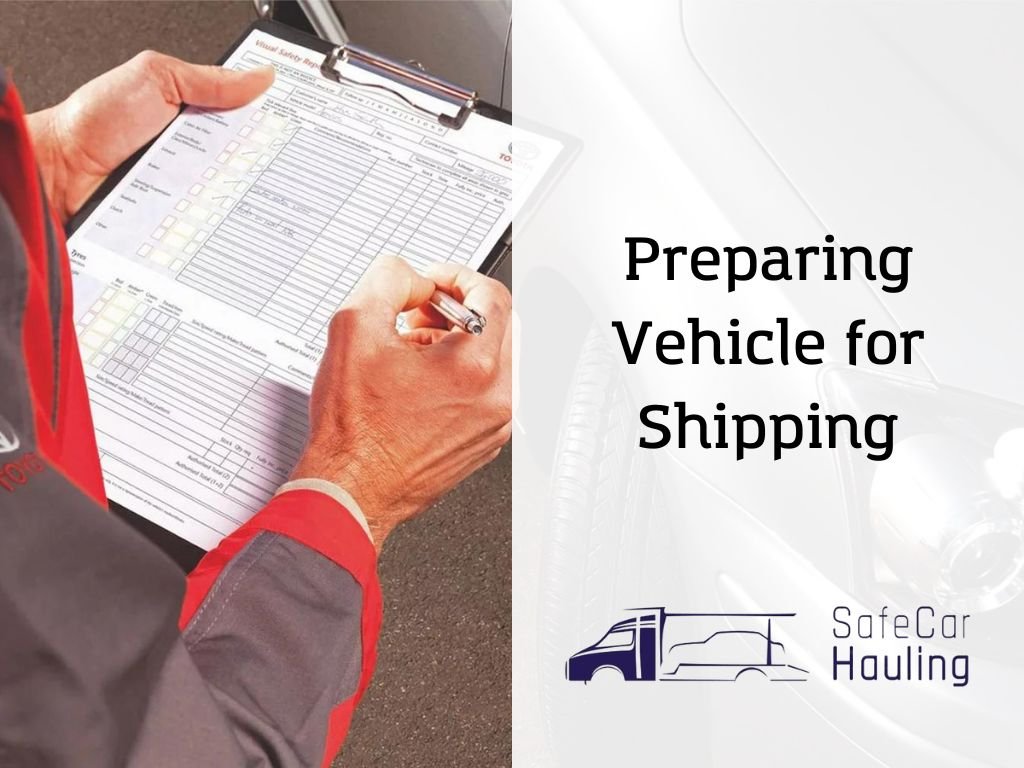What is Line Haul Transportation?
In the expansive realm of logistics, encountering unfamiliar terms is common. One such term is “line haul transportation.” If this term is new to you, rest assured, you’re not alone.
Transportation is all around us, via trucks, trains, ships, or planes. In the United States alone, there are 2,929 line haul railroads, making it one of the most prevalent modes of transport.
Yet, comprehending the line haul transportation model may not be everyone’s forte. In this piece, we aim to demystify line haul transportation and its various facets. Let’s delve in!
Line Haul Transportation: The Meaning & Definition
Line haul transportation is a vital aspect of shipping logistics that assists shipping firms in determining the most efficient logistics for transporting freight from one location to another within a set timeframe. In the realm of line haul, goods are moved between cities using various transportation modes such as road, air, water, rail, and waterways. What distinguishes line haul transportation from other freight transportation methods is the diverse nature and dimensions of the goods being transported. This encompasses a wide range of items, from small packages to large shipments.
How Does Line Haul Transportation Work?
To ensure efficient transportation, all items heading to the same location are consolidated into long-distance trailers. These goods are then transported to one or more distribution centers for further organization.
At the sorting facility, the freight is once again grouped with items of similar weight before being dispatched to their final destinations.
This complex process involves a network of infrastructure and stakeholders, including drivers, trucks, dock executives, depots, hubs, and distribution or sorting facilities.
A crucial element in managing this linehaul network is the “line haul charge,” which we’ll delve into further shortly!
Line Haul Carriers: What Are They?
These organizations or companies actively participate in the entire line haul process and furnish necessary data for tracking line-haul logistics. Similar to other shipping carriers, line haul carriers adhere to load regulations, including Full Truck Load (FTL) and Less than Truckload (LTL).
Why Is Tracking Line Haul Carriers Important?
Line haul carriers utilize digital software to meticulously track the logistics of each package. This tracking system enables carriers to manage all freight requirements and adhere to federal regulations seamlessly. Additionally, it aids carriers in assessing efficiency and refining their operations. The data obtained from this tracking process serves various purposes: controlling shipment costs, providing valuable insights for carriers and customers alike, and verifying compliance with governmental regulations.
5 Critical Shipping Aspects Impacted by Line Haul Carriers
Line haul carriers play a crucial role in the shipping process. Here are the five key areas greatly influenced by their operations:
- Intercity Goods Movement: Line haul carriers determine the most suitable transportation method for moving goods between cities. This decision considers factors like shipping costs, time efficiency, and competitiveness.
- Transportation Costs: By closely monitoring delivery expenses, line haulers gain valuable insights to optimize transportation methods and control costs. Utilizing analytics, they can set competitive prices for logistics services while ensuring profitability.
- Delivery Timelines: The carrier’s efficiency and tracking capabilities significantly impact delivery times. Through accurate tracking of delivery estimates, carriers can proactively inform recipients about their incoming deliveries, saving time and enhancing efficiency.
- Depot Movements: Line haul carriers facilitate the transportation of goods to and from depots, providing companies with increased flexibility in shipping schedules. Depots serve as secure storage locations for finished products and raw materials, ensuring controlled conditions until final delivery.
- Sorting Facility Operations: Line haul carriers manage shipments to and from sorting facilities, where companies categorize materials and goods based on their intended use. This process enhances organizational efficiency and streamlines logistics operations.
Line Haul Charge
Line haul charges, as the name suggests, represent the premium fees carriers typically impose for shipping services. These charges are determined based on various factors including the distance between the origin and destination points as well as the shipment’s weight. It’s important to note that additional services like loading, unloading, and transfers are not encompassed within the line haul charge but can be availed for an extra fee.
The total line haul charge varies depending on the mode of transportation. For instance, in truck and road transportation, costs are primarily influenced by truck mileage. On the other hand, air freight transportation involves more complex calculations that extend beyond just mileage and weight considerations.
The Difference between Line Haul vs. Long Haul Trucking
When it comes to trucking logistics, there are two primary shipping models: line haul trucking and long haul trucking. Here’s a breakdown of the two:
Line Haul Trucking: This model is akin to a typical 9-to-5 job. Truckers complete their shift and head home in line haul transportation.
Long Haul Trucking: In this method, truckers spend days, weeks, or even months on the road to deliver goods to their destination.
Line haul trucking is the preferred method as it helps reduce work fatigue, haul costs, and potential accidents caused by driver fatigue. Additionally, it can lower expenses associated with long-haul trucking such as fuel, food, and lodging costs.
The Line Haul Trucking Model: 5 Key Benefits
Shipping companies embracing the line haul trucking model excel in efficiency compared to traditional trucking methods, reaping numerous advantages from this innovative approach. Here are some top reasons why line haul trucking stands out:
- Swift Deliveries:
Efficiency is paramount in any logistics network. Line haul trucking streamlines deliveries, with the main challenge being securing reliable drivers who can ensure punctuality. Additionally, tracking systems simplify operations by providing insights into delivery times, enabling carriers to optimize routes for faster service. - Cost-Effectiveness:
By leveraging analytics throughout the logistics chain, carriers can manage and reduce transportation costs. This strategic approach not only benefits carriers by enhancing efficiency but also enables them to offer clients more affordable delivery solutions. - Enhanced Safety:
Line haul trucking prioritizes driver well-being by implementing shorter work shifts, reducing fatigue-related errors and accidents. This focus on driver welfare leads to a more efficient and error-free transportation process. - Seamless Communication:
Effective tracking systems and analytics foster continuous communication between customers and carriers. This robust communication minimizes errors and enhances delivery efficiency, strengthening the overall supply chain. Improved communication also contributes to cost savings for all parties involved. - Stronger Customer-Carrier Relations:
The superior speed, safety, and cost-effectiveness of line haul transportation enhance relationships between carriers and customers. These positive interactions bolster the supply chain, allowing carriers to offer faster and more efficient services at competitive rates, thereby fostering long-term customer loyalty.
Line Haul Optimization: What It Is?
To enhance operational efficiency and cost-effectiveness in shipping, it is crucial to focus on saving money and streamlining freight shipments to carriers. Line haul optimization plays a pivotal role in enhancing services by optimizing the collection of freight from various hubs. Initially, cargo is sorted by destination, spanning from light documents to heavy machinery in line haul transportation. The primary objective of line haul transportation is to ensure timely delivery of shipments to the designated hubs. The industry heavily depends on a network comprising drivers, couriers, vehicles, and depots.
Optimizing Line Haul Transportation Business in 3 Steps
For transportation companies looking to enhance their line haul operations, these three steps are crucial.
- Step 1: Record detailed information on depot locations and capacities.
- Step 2: Plan the cargo flow route from the origin hub to the destination hub.
- Step 3: Utilize the insights from steps 1 and 2 to determine the most suitable route, service type, and cargo size.
Guidelines for Enhancing Line Haul Transportation
Here are some additional tips to enhance your line haul transportation system:
Maintain Records
Document every shipment for better insights into your company’s shipping capacity. Keep track of shipment details like weight, delivery location, assigned driver, and delivery time.
Update Customers Regularly
Keeping customers informed about potential delivery times or delays fosters trust and strengthens your relationship with them.
Optimize Delivery Routes
Identifying the most efficient routes for deliveries ensures timely shipments and helps manage transportation expenses effectively.
Incentivize Drivers with Benefit Packages
Boost driver performance by rewarding them with bonus packages for exceptional effort or results. This approach can enhance productivity and foster loyalty among your drivers.
Utilize Tracking Software
Leverage digital tracking software to monitor the entire shipping process efficiently. Explore various tools available to find the one that aligns best with your company’s needs and operations.
Understanding the Diverse Costs of Line Haul Transportation and Their Underlying Reasons
Line haul transportation involves moving loads of varying weights and dimensions, making it challenging to pinpoint an average cost range. Let’s delve into factors contributing to cost fluctuations:
- Supply & Demand: Rates fluctuate due to supply and demand dynamics, impacting regions universally. Seasonal demand can also influence pricing.
- Freight Specifics: Details of the freight, such as haul length and shipping dates, directly influence the shipping cost. Longer hauls and specific lead times can incur higher charges.
- Various Influencing Factors: The final cost of line haul transportation is influenced by a range of factors:
- Accessorial Requirements
- Job-Site Deliveries
- After-Hours Deliveries & Driver-Assist Loads
- Uniform Intermodal Interchange
- Transportation Worker Identification Credential (TWIC) Cards
- Weather Conditions
These factors collectively contribute to the complexity of determining line haul transportation costs.
Taking Control of Your Line Haul Transportation Cost
To optimize shipping logistics, focus on aspects within your control like lead times and delivery windows. Proactive planning and flexibility can lead to cost savings. If time is tight, seek assistance from reputable carriers and brokers to streamline the process. Trusted brokers have connections with numerous carriers to facilitate efficient transportation of your goods.
Conclusion:
Line haul transportation operations are intricate, requiring meticulous checks and balances. This mode of transport is ideal for handling long-distance logistics efficiently. By effectively optimizing and incorporating this approach into their services, shipping companies can enhance the overall efficiency and cost-effectiveness of their shipping system.
Undoubtedly, line haul transportation has revolutionized the logistics landscape. Shipping companies can continue to leverage this mode to their advantage by optimizing its utilization and capitalizing on acquired insights.





